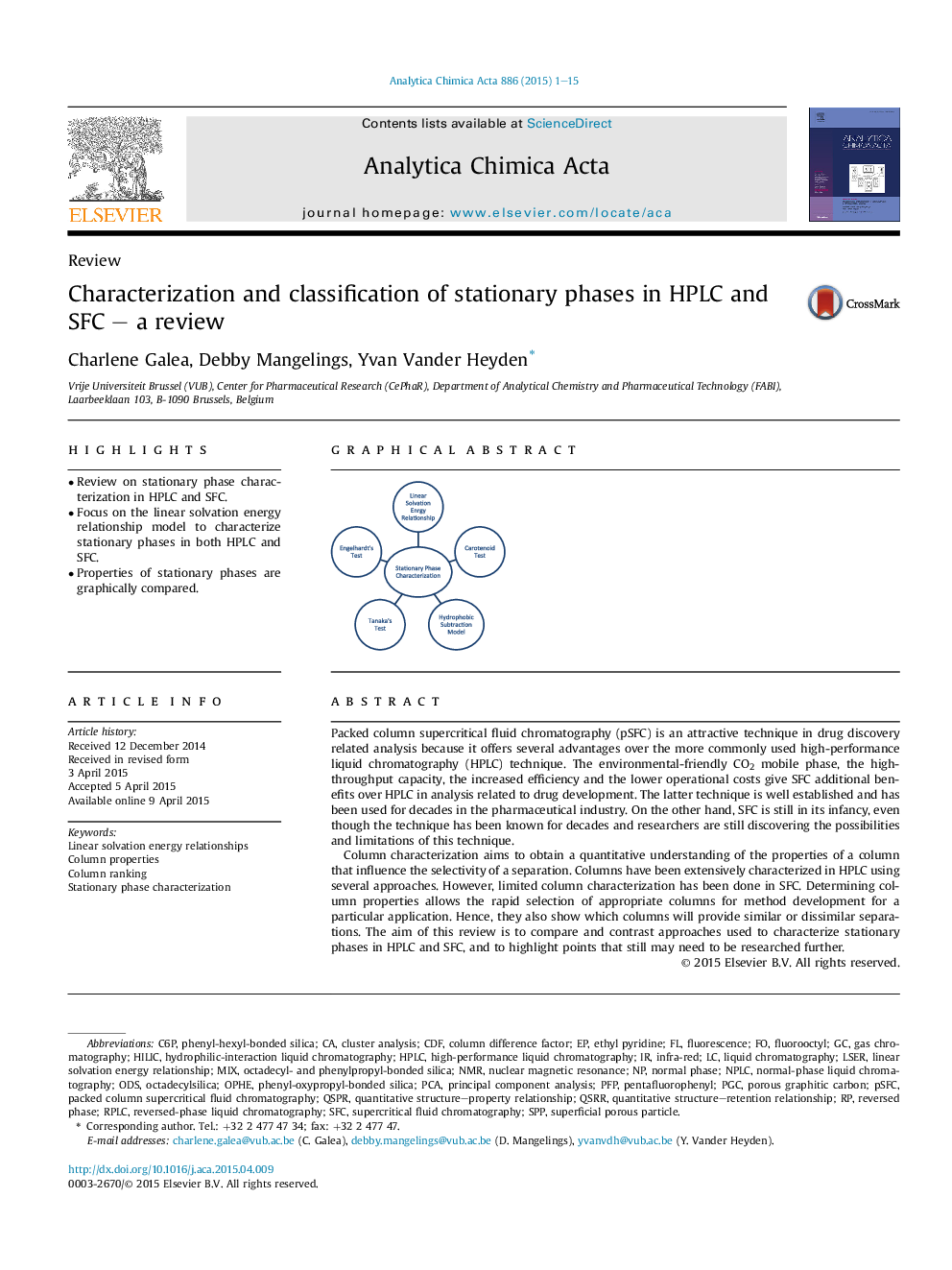| Article ID | Journal | Published Year | Pages | File Type |
|---|---|---|---|---|
| 1163721 | Analytica Chimica Acta | 2015 | 15 Pages |
•Review on stationary phase characterization in HPLC and SFC.•Focus on the linear solvation energy relationship model to characterize stationary phases in both HPLC and SFC.•Properties of stationary phases are graphically compared.
Packed column supercritical fluid chromatography (pSFC) is an attractive technique in drug discovery related analysis because it offers several advantages over the more commonly used high-performance liquid chromatography (HPLC) technique. The environmental-friendly CO2 mobile phase, the high-throughput capacity, the increased efficiency and the lower operational costs give SFC additional benefits over HPLC in analysis related to drug development. The latter technique is well established and has been used for decades in the pharmaceutical industry. On the other hand, SFC is still in its infancy, even though the technique has been known for decades and researchers are still discovering the possibilities and limitations of this technique.Column characterization aims to obtain a quantitative understanding of the properties of a column that influence the selectivity of a separation. Columns have been extensively characterized in HPLC using several approaches. However, limited column characterization has been done in SFC. Determining column properties allows the rapid selection of appropriate columns for method development for a particular application. Hence, they also show which columns will provide similar or dissimilar separations. The aim of this review is to compare and contrast approaches used to characterize stationary phases in HPLC and SFC, and to highlight points that still may need to be researched further.
Graphical abstractFigure optionsDownload full-size imageDownload as PowerPoint slide
